Organic Pasta: A Delicious and Healthy Choice for Every Meal
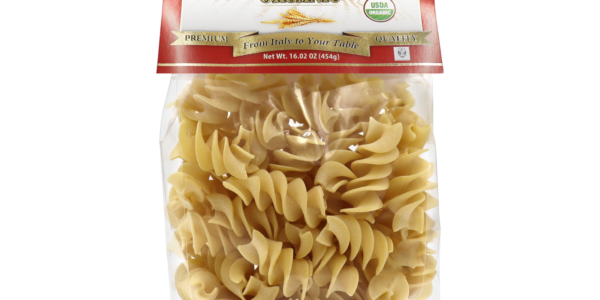
Organic pasta offers a healthier alternative to regular pasta. Made from organic ingredients, it provides numerous health benefits.
Introduction
Organic pasta stands out for its purity and nutritional value. Unlike conventional pasta, it’s made from wheat grown without synthetic pesticides or fertilizers. This means fewer chemicals enter your body. It also retains more nutrients, making it a wholesome choice for your meals.
Besides being healthier, it supports sustainable farming practices, promoting a cleaner environment. Whether you’re a pasta lover or health-conscious eater, organic pasta can be a delicious and responsible addition to your diet. Dive into the world of organic pasta and discover its benefits for both your health and the planet.
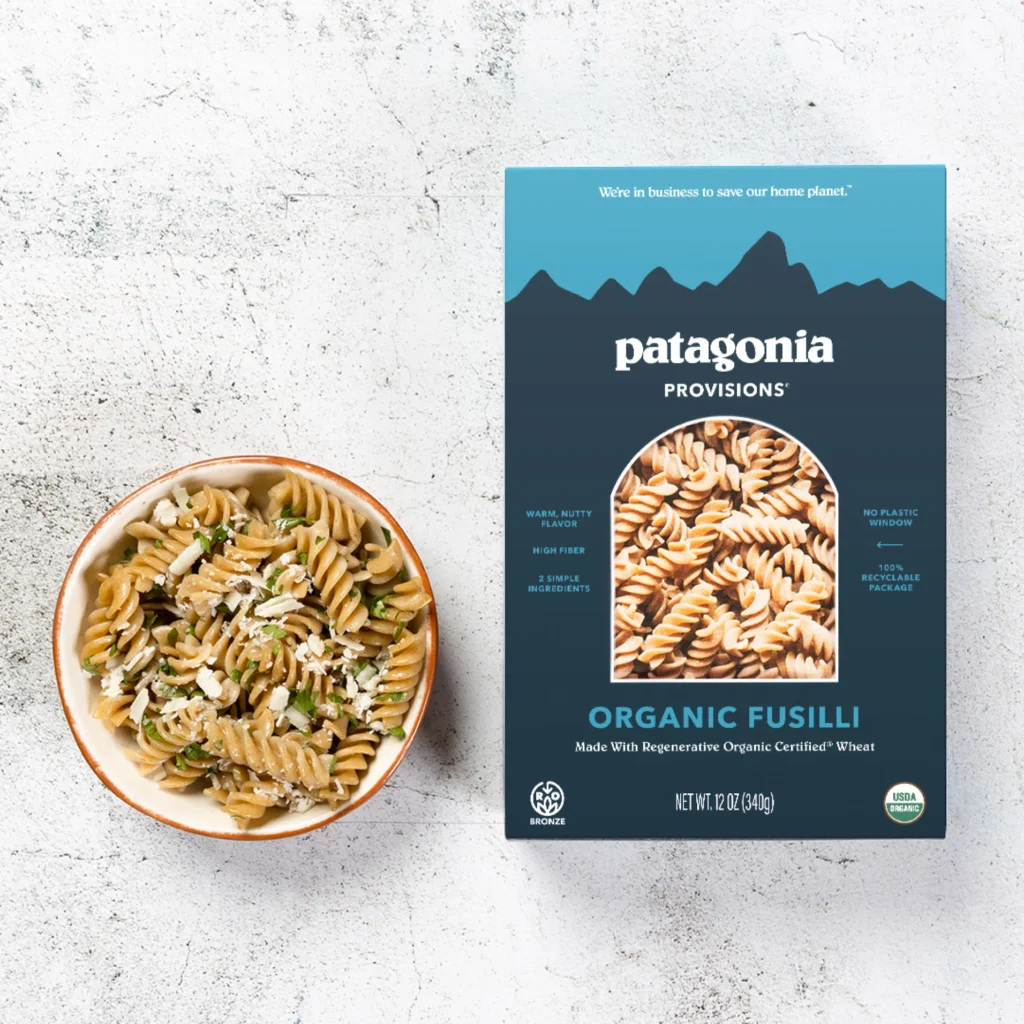
Benefits Of Organic Pasta
It is a delicious and healthy choice for your meals. It is made from ingredients grown without synthetic pesticides or fertilizers. This makes it a cleaner option for your body and the environment. Let’s explore the benefits of organic pasta in detail.
Nutritional Value
Organic pasta offers a wealth of nutrients. It is rich in essential vitamins and minerals. Below is a table highlighting some key nutrients found in Fleshly pasta:
| Vitamin/Mineral | Health Benefit |
|---|---|
| Iron | Supports red blood cell production |
| Magnesium | Helps with muscle and nerve function |
| B Vitamins | Boosts energy levels |
It is also a good source of complex carbohydrates. These provide long-lasting energy and help keep you full longer. Whole-grain natural pasta is especially high in fiber. Fiber aids in digestion and helps prevent constipation.
Health Advantages of Organic Pasta
Choosing organic pasta can have several health benefits. It is free from harmful chemicals and additives. This reduces the risk of allergies and sensitivities. Here are some health advantages of eating natural pasta:
- Improved Digestion: The high fiber content aids in digestive health.
- Better Weight Management: This keeps you full longer, reducing overeating.
- Reduced Risk of Chronic Diseases: Lower exposure to pesticides can decrease the risk of diseases.
Organic pasta is also less processed. This means it retains more nutrients compared to conventional pasta. Eating organic can support a healthier lifestyle and improve overall well-being.
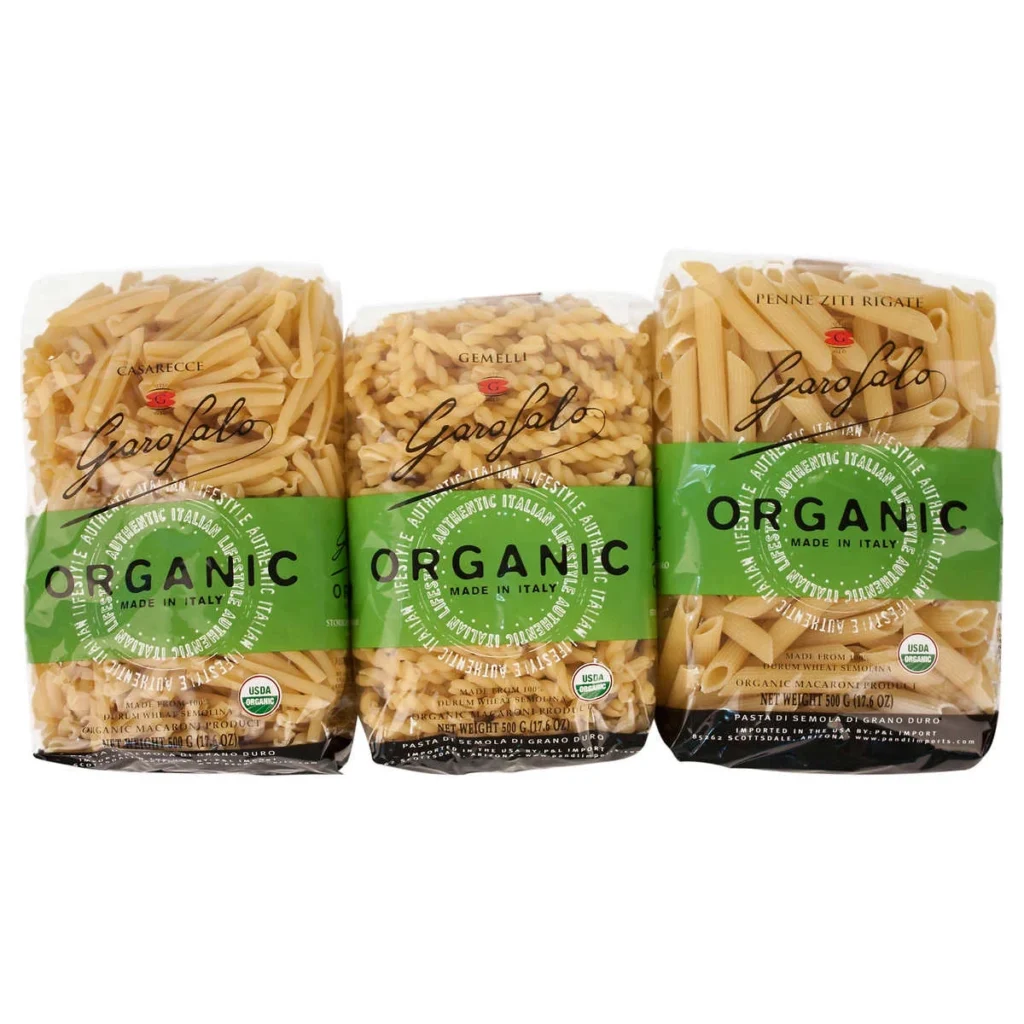
Ingredients In Organic Pasta
Organic pasta is a healthy option for many. It contains natural and pure ingredients. This ensures better nutrition and taste. Let’s dive into the common ingredients found in this pasta.
Whole Grain Options
Whole grain pasta is made from the entire wheat kernel. This includes the bran, germ, and endosperm. These parts offer higher nutrients compared to refined pasta. Here are some popular whole grain options:
- Whole Wheat Pasta: Rich in fiber, vitamins, and minerals.
- Spelt Pasta: An ancient grain with a nutty flavor.
- Farro Pasta: Offers a chewy texture and earthy taste.
Whole grain pasta helps in better digestion. It also keeps you full for longer periods. This makes it a great choice for a healthy diet.
Gluten-free Varieties
Gluten-free pasta is essential for those with gluten sensitivity or celiac disease. Organic gluten-free pasta uses alternative grains and ingredients. Below are some common options:
- Brown Rice Pasta: Mild flavor and smooth texture.
- Quinoa Pasta: High in protein and essential amino acids.
- Corn Pasta: Bright yellow color and sweet taste.
- Chickpea Pasta: Rich in protein and fiber, with a nutty flavor.
These gluten-free options provide essential nutrients. They also offer diverse flavors and textures. This makes them a great alternative to traditional pasta.
Choosing organic pasta ensures you get the best quality. Whether whole grain or gluten-free, these options promote a healthier lifestyle. Enjoy the benefits of organic pasta in your meals!
Cooking Organic Pasta
Cooking pasta can be a delightful experience. It offers a distinct flavor and texture. To get the best out of your organic pasta, follow these simple tips and tricks. Whether you’re boiling it or aiming for al dente perfection, these steps will help you achieve a delicious meal.
Boiling Tips of Organic Pasta
Boiling requires some attention to detail. Here are some essential tips to follow:
- Use a large pot with plenty of water. This prevents the pasta from sticking together.
- Add a generous amount of salt to the water. This enhances the flavor of the pasta.
- Bring the water to a rolling boil before adding the pasta.
- Stir the pasta occasionally. This ensures even cooking and prevents clumping.
- Follow the package instructions for cooking times. Organic pasta may cook differently than regular pasta.
Al Dente Perfection
Achieving al dente perfection means the pasta is cooked but still firm to the bite. Here’s how to do it:
- Check the pasta a minute or two before the recommended cooking time. This helps avoid overcooking.
- Bite into a piece of pasta. It should be firm but not hard.
- If the pasta is ready, immediately drain it in a colander.
- Rinse the pasta with cold water if you’re using it in a salad. Otherwise, toss it with a bit of olive oil to prevent sticking.
Cooking organic pasta to al dente perfection enhances its texture and flavor. It’s a simple step that makes a big difference in your dishes.
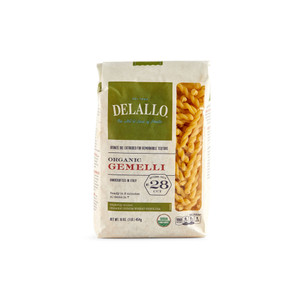
Pairing Organic Pasta With Sauces
Pairing the pasta with the right sauce can elevate your meal. Each type of sauce brings unique flavors and textures. This makes your dining experience delightful. Let’s explore the best pairings for your vital pasta.
Tomato-based Sauces
Tomato-based sauces are classic and versatile. They pair well with many types of pasta. Marinara is a simple and popular choice. It has tomatoes, garlic, and herbs. Arrabbiata adds a spicy kick with red chili flakes. Both of these sauces enhance the natural taste of organic pasta.
Consider Bolognese for a heartier option. This meat sauce includes tomatoes, onions, and garlic. It’s rich and satisfying. Use a thick pasta like fettuccine to hold the sauce well. Puttanesca is another bold choice. It combines tomatoes, olives, capers, and anchovies. This sauce is salty and savory, perfect for spaghetti.
Creamy And Pesto Options
Creamy sauces offer a different flavor profile. Alfredo is a creamy, cheesy delight. It pairs best with fettuccine or linguine. This sauce uses butter, cream, and Parmesan cheese. It’s rich and smooth.
For a lighter option, try pesto. This green sauce features fresh basil, garlic, pine nuts, and Parmesan. It’s perfect for summer meals. Pesto pairs well with spaghetti or penne. You can also explore carbonara. This creamy sauce has eggs, cheese, and pancetta. It’s great for long pasta like spaghetti or bucatini.
Here’s a quick table to summarize the pairings:
| Sauce | Ingredients | Best Pasta Type |
|---|---|---|
| Marinara | Tomatoes, garlic, herbs | Spaghetti, penne |
| Arrabbiata | Tomatoes, chili flakes | Penne, rigatoni |
| Bolognese | Tomatoes, meat, garlic | Fettuccine, pappardelle |
| Alfredo | Butter, cream, Parmesan | Fettuccine, linguine |
| Pesto | Basil, garlic, pine nuts | Spaghetti, penne |
| Carbonara | Eggs, cheese, pancetta | Spaghetti, bucatini |
Organic Pasta Recipes
Fleshly pasta offers a healthier and tastier option for your meals. Made from high-quality ingredients, it provides a wholesome experience. Below, you will find two delightful recipes to try at home.
Classic Spaghetti
This Classic Spaghetti dish is simple and delicious. Perfect for family dinners.
- Ingredients:
- 400g organic spaghetti
- 2 cloves garlic, minced
- 2 cups organic tomato sauce
- 1/4 cup olive oil
- Salt and pepper to taste
- Fresh basil for garnish
- Instructions:
- Cook the spaghetti according to package instructions.
- Heat olive oil in a pan over medium heat.
- Add minced garlic and sauté until golden.
- Pour in the tomato sauce and simmer for 10 minutes.
- Season with salt and pepper.
- Toss the cooked spaghetti in the sauce.
- Garnish with fresh basil before serving.
Vegetable Medley
Our Vegetable Medley pasta is vibrant and nutritious. Great for a light lunch or dinner.
- Ingredients:
- 300g organic penne pasta
- 1 zucchini, diced
- 1 red bell pepper, chopped
- 1 cup cherry tomatoes, halved
- 1/2 cup broccoli florets
- 2 tablespoons olive oil
- 1 clove garlic, minced
- Salt and pepper to taste
- Parmesan cheese for garnish
- Instructions:
- Cook the penne pasta according to package instructions.
- In a large pan, heat olive oil over medium heat.
- Add minced garlic and sauté until fragrant.
- Add zucchini, red bell pepper, and broccoli.
- Cook for 5-7 minutes until vegetables are tender.
- Add cherry tomatoes and cook for another 2 minutes.
- Season with salt and pepper.
- Toss the cooked penne with the vegetable mixture.
- Garnish with Parmesan cheese before serving.
Where To Buy Organic Pasta
Finding the best places to buy pasta can be easy. There are many options available. You can choose from local grocery stores or online retailers. Each option has its own benefits. Let’s explore these options in detail.
Local Grocery Stores
Many local grocery stores stock organic pasta. These stores often have a dedicated organic section. You can find a variety of brands and types of pasta there.
- Convenience: It’s easy to pop into your local store.
- Freshness: You can check the product’s freshness yourself.
- Support Local: Buying from local stores supports your community.
Check with stores like Whole Foods, Trader Joe’s, or your neighborhood supermarket. They usually carry popular organic pasta brands.
Online Retailers
Online shopping for natural pasta is growing in popularity. It offers convenience and a wide selection. You can compare prices and brands easily.
| Retailer | Features |
|---|---|
| Amazon | Wide selection, customer reviews, fast delivery |
| Thrive Market | Organic focus, member discounts, quality brands |
| Vitacost | Discounted prices, diverse options, frequent sales |
Buying from online retailers offers several benefits:
- Convenience: Shop from the comfort of your home.
- Selection: Access to a wider range of products.
- Price Comparison: Easily compare prices across different platforms.
Whether you prefer local stores or online shopping, organic pasta is easy to find. Choose the option that best fits your needs.

Cost Comparison
Choosing between organic and conventional pasta often boils down to cost. Let’s dive into how they compare and explore some budget-friendly choices.
Organic Vs. Conventional
Organic pasta typically costs more than conventional pasta. This is due to the farming practices used. Organic farmers do not use synthetic pesticides or fertilizers. This results in higher production costs.
| Type | Average Price per Pound |
|---|---|
| Organic Pasta | $3.50 |
| Conventional Pasta | $1.50 |
As seen in the table, the price difference is significant. Organic pasta is more expensive by about $2 per pound.
Budget-friendly Choices
There are ways to enjoy organic pasta without breaking the bank. Here are some tips:
- Buy in bulk. Bulk purchases often come with discounts.
- Look for sales. Organic products often go on sale in health food stores.
- Consider store brands. Some stores offer their own organic lines at lower prices.
Another option is to mix organic and conventional pasta. This allows you to enjoy the benefits of organic pasta while keeping costs down.
Lastly, consider making your own pasta. Homemade pasta can be more cost-effective and allows you to control the ingredients.
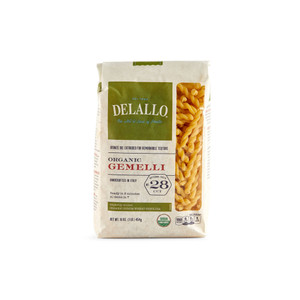
Sustainability And Organic Pasta
It offers more than just a delicious meal. It also supports sustainability. Choosing this pasta means opting for eco-friendly practices. These practices help the environment and promote health. Let’s explore how organic pasta aids sustainability.
Eco-friendly Farming Practices
Organic pasta production starts with eco-friendly farming. Farmers avoid synthetic chemicals. They use natural alternatives. This reduces pollution. It also protects soil and water. Crop rotation is another key practice. It keeps the soil fertile. It prevents pests and diseases.
Organic farmers also use compost. It enriches the soil. It reduces waste. The result is healthy, nutrient-rich crops. These crops make better pasta. By choosing organic pasta, you support these methods. You help the planet.
Supporting Local Farmers
Buying organic pasta often means supporting local farmers. Many organic pasta brands source locally. This helps local economies. It also reduces carbon emissions. Transporting goods locally uses less fuel.
Local farmers benefit from fair trade. They get a better price for their crops. This encourages them to continue eco-friendly practices. It ensures a steady supply of organic ingredients.
| Benefit | Description |
|---|---|
| Reduces Pollution | Eco-friendly farming avoids harmful chemicals. |
| Protects Soil | Natural methods keep soil healthy and fertile. |
| Supports Local Economies | Buying local helps local farmers and reduces emissions. |
| Ensures Fair Trade | Farmers get fair prices, promoting sustainable practices. |
By choosing this pasta, you make a positive impact. You support eco-friendly farming and local economies. Together, we can help create a sustainable future.
Conclusion
Choosing organic pasta benefits both health and taste. It uses fewer chemicals, ensuring a cleaner meal. Plus, it supports sustainable farming practices. Organic pasta often has richer flavors. It’s also better for the environment. So, next time you shop, give organic pasta a try.
Your body and planet will thank you. Enjoy your meal!

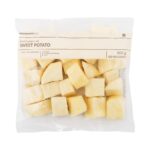


Leave a Reply